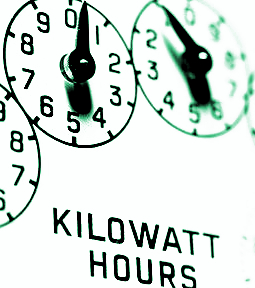Stats show power drop
 Australia’s electricity prices have fallen to their lowest level in years.
Australia’s electricity prices have fallen to their lowest level in years.
Two years of tougher rules on suppliers and a fall in wholesale costs have left households paying 8 per cent less for electricity on average.
The Australian Competition and Consumer Commission (ACCC) says the average electricity bill for residential customers fell by $128 to $1434 last financial year.
However, consumer bills are still 32 per cent higher than they were in 2008.
“The average cost per unit of electricity supplied to residential customers is now at its lowest level in eight years,” the ACCC says in its latest review into the energy grid.
“This decline is driven by gradual network cost decreases, as well as more recent falls in previously high wholesale electricity costs.”
Household electricity cost 27 cents per kilowatt-hour on average last year, up from 20 cents in 2008, the regulator said.
But in the past two years, there have been reductions in all cost components except environmental, such as government rules that use feed-in tariffs to encourage renewable energy and pass these costs on to all consumers.
“Environmental costs are the only component of the cost stack to increase in both financial years,” the regulator said.
“In 2019-20 environmental costs increased by $7 or 5 per cent more than the environmental component in 2018-19.
“Similarly, in 2020-21 environmental costs increased by $6 or 4 per cent more than the environmental component in 2019-20.”
These costs cover national schemes such as the large-scale renewable energy target and small-scale renewable energy scheme, as well as state energy-efficiency schemes and feed-in tariff schemes. They now make up 10 per cent of the average annual residential bill.
Federal and state rules now require energy retailers to simplify their offerings to customers and provide a “default market offer” with a lower price.
“A number of factors likely contributed to the recent reductions. For retail margins, we consider the most significant factor was the introduction of the Default Market Offer and the
Victorian Default Offer from 1 July 2019,” the ACCC said.
“For retail costs, there have been substantial changes to selling practices. For example, payments made by smaller retailers to third parties who facilitate the sale of products and services have fallen dramatically.”
The Federal Government is claiming responsibility for the falling power bills, saying its default market offer rules, described as “big stick” to oversee the electricity retailers, has driven prices down.
However, the ACCC says that the bulk of the benefits for consumers have come from changes to supply in the wholesale market.
“Lower wholesale costs are the primary cause of the overall decrease in electricity costs over the last two years,” it says.
“The decrease in wholesale electricity costs reflects falls in wholesale spot market prices.
“This fall in wholesale spot prices was driven by higher solar and wind generation, lower fuel costs for coal and gas generators, and lower total demand due to milder weather and COVID-19 related disruptions to economic activity.”







 Print
Print